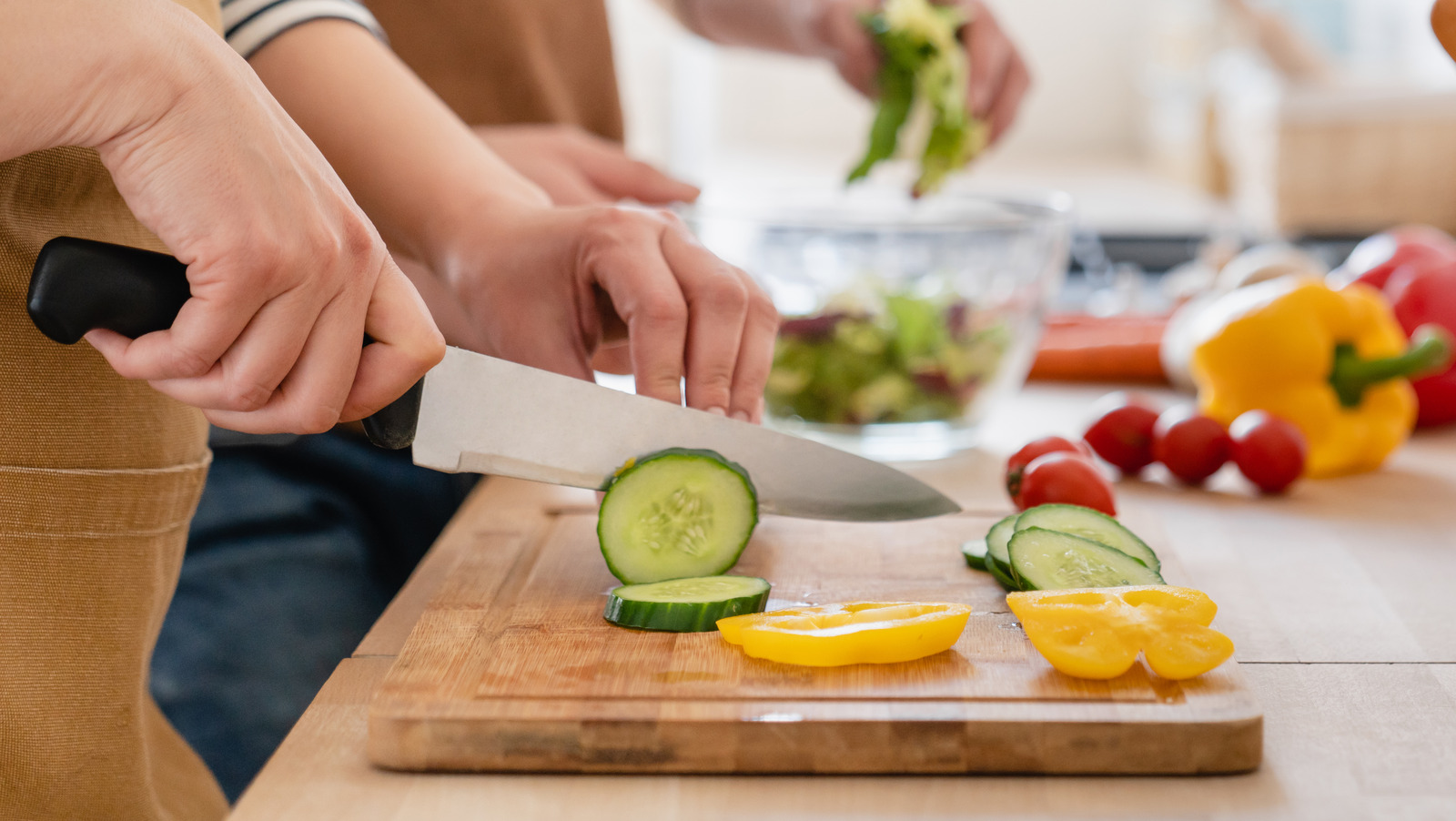When Preparing Vegetables Which Color Cutting Board Should You Use?
Written By James Morgan
Barbecue enthusiasts understand the importance of maintaining a clean and organized cooking station. When it comes to preparing vegetables, using the correct color-coded cutting board is essential for ensuring food safety and preventing cross-contamination. In this article, we will dive deep into the world of color-coded cutting boards and learn which color to use when preparing vegetables.

Why Color-Coded Cutting Boards?
Using color-coded cutting boards helps in minimizing the risk of cross-contamination. By assigning different colors to different food types, you can ensure that harmful bacteria are not transferred from raw meat, poultry, or seafood to fresh vegetables. This practice is especially important for barbecue enthusiasts who often handle a variety of food items during their grilling sessions.

The Colors and Their Meanings
Green for Vegetables
The green cutting board is universally recognized for use with vegetables and fruits. This ensures that fresh produce is not contaminated by raw meats or other potentially hazardous foods. By using a green cutting board, you can keep your produce safe and maintain its freshness for your barbecue.
Red for Raw Meat
The red cutting board is reserved for raw meat. Using a separate red board helps to prevent the transfer of harmful bacteria found in raw meat to other foods, especially those that are consumed raw, like vegetables.
Yellow for Poultry
The yellow cutting board is designated for poultry products. Like the red board, the yellow board helps prevent cross-contamination between raw poultry and other foods. It is particularly important for barbecue enthusiasts who often handle chicken and other poultry items.
Blue for Seafood
The blue cutting board is used for seafood. Seafood can contain different bacteria and allergens, and using a separate board helps in preventing the contamination of vegetables and other food items.
White for Dairy and Bread
The white cutting board is typically used for dairy and bakery products. While these foods may not be as prone to contamination as raw meat or poultry, using separate boards helps maintain a clean and organized kitchen environment.

Best Practices for Using Cutting Boards
Apart from using color-coded cutting boards, there are several best practices to follow to ensure food safety and efficiency in your barbecue preparations:
Regular Cleaning and Sanitizing
Ensure that you clean and sanitize your cutting boards after each use. This is especially important when switching between different food types. You can clean cutting boards with hot, soapy water and sanitize them using a solution of one tablespoon of bleach to one gallon of water.
For more details on cleaning cutting boards, visit How to Keep a Wood Cutting Board Clean.
Regular Inspection and Maintenance
Inspect your cutting boards regularly for any deep grooves or cracks that can harbor bacteria. If you find any, consider replacing the board. Wooden cutting boards can be maintained by applying cutting board oil to keep them in good condition.
Learn more about maintaining your boards at How to Season a Cutting Board for the First Time.
Proper Storage
Store your cutting boards in a clean, dry place. Avoid stacking them while they are still wet, as this can lead to the growth of mold and bacteria. Proper storage ensures that your boards remain in good condition and are always ready for use.
For tips on proper cutting board use, visit How Should You Stand at Your Cutting Board.

Color-Coded Cutting Board Sets
Investing in a set of color-coded cutting boards can make your barbecue preparations much more efficient and safer. These sets often come with boards for all the major food groups, allowing you to easily switch between different tasks without worrying about cross-contamination.
For more information on choosing and using cutting boards, check out this guide on cutting boards from Wikibooks.
FAQs
Q: Can I use the same cutting board for vegetables and meat if I wash it in-between?
A: While washing the board between uses can reduce the risk of cross-contamination, it is still best practice to use separate color-coded boards for different food types. This ensures that no harmful bacteria are transferred between foods.
Q: How often should I replace my cutting boards?
A: Replace your cutting boards when they develop deep grooves, cracks, or excessive wear. These imperfections can harbor bacteria, making it difficult to clean the boards thoroughly.
Q: Can I use a wooden cutting board for vegetables?
A: Yes, wooden cutting boards are suitable for vegetables. They are durable and have natural antibacterial properties. Make sure to maintain and clean them properly to ensure food safety.
As an Amazon Associate, I earn from qualifying purchases.



